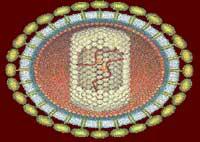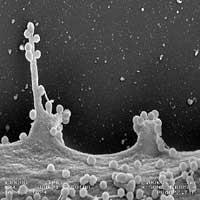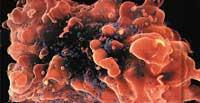Closer to the AIDS vaccine?
2002/03/01 Elhuyar Zientzia Iturria: Elhuyar aldizkaria

Because of the enormous mutation capacity of the AIDS virus, traditional vaccines, that is, those based on the formation of antibodies, have failed to prevent the disease. For this reason, studies of recent years have been aimed at carrying out vaccines with a behavior similar to the immune system. In this line, researchers from Merck laboratories introduced monkeys AIDS virus (SIV) DNA into the surface of HIV. In the beginning, the vaccine with this virus (SHIV) gave very good results in monkeys: After 40 days, the inserted rays could not detect such a small number of viruses. On the contrary, 13 of the 14 monkeys in the control group developed the disease. It was certainly the best result ever obtained.
However, according to a group of researchers from Harvard Medical School, the vaccine is not as effective as originally thought. They have tested a similar vaccine and, although after two years 7 out of 8 monkeys were alive, the eighth died after 6 months. Apparently, a specific SHIV gene was mutated, so T cells of the monkey immune system lost the ability to know the SHIV virus.
According to Merck researchers, to get an effective vaccine it is necessary to increase the number of proteins that T cells can know. Thus, despite a mutation, T cells would look for other proteins as it is very difficult for all proteins to mutate at the same time. On the other hand, the sessions that have been held so far in monkeys have not been able to know what results it would give in humans.

Gai honi buruzko eduki gehiago
Elhuyarrek garatutako teknologia






